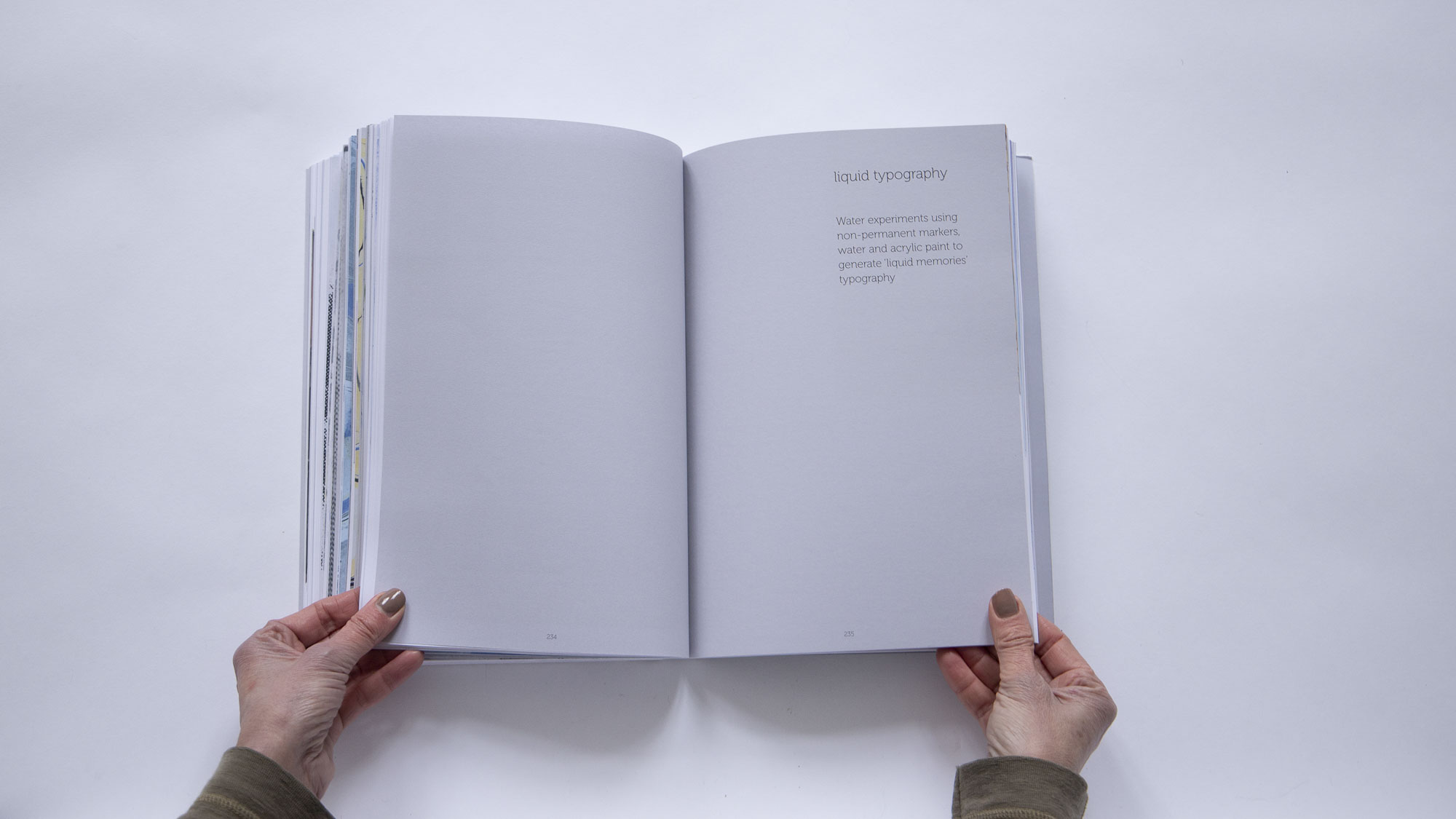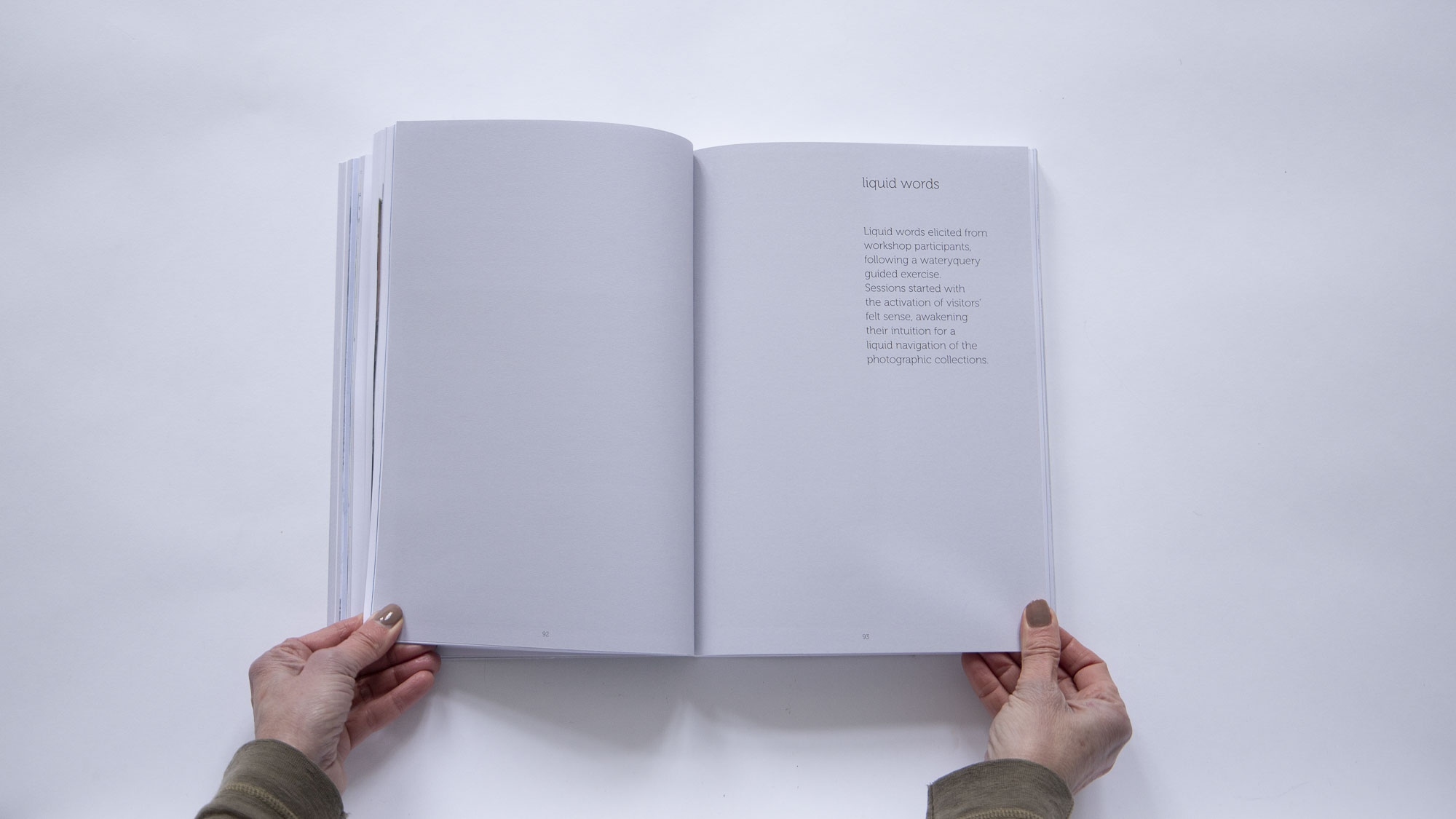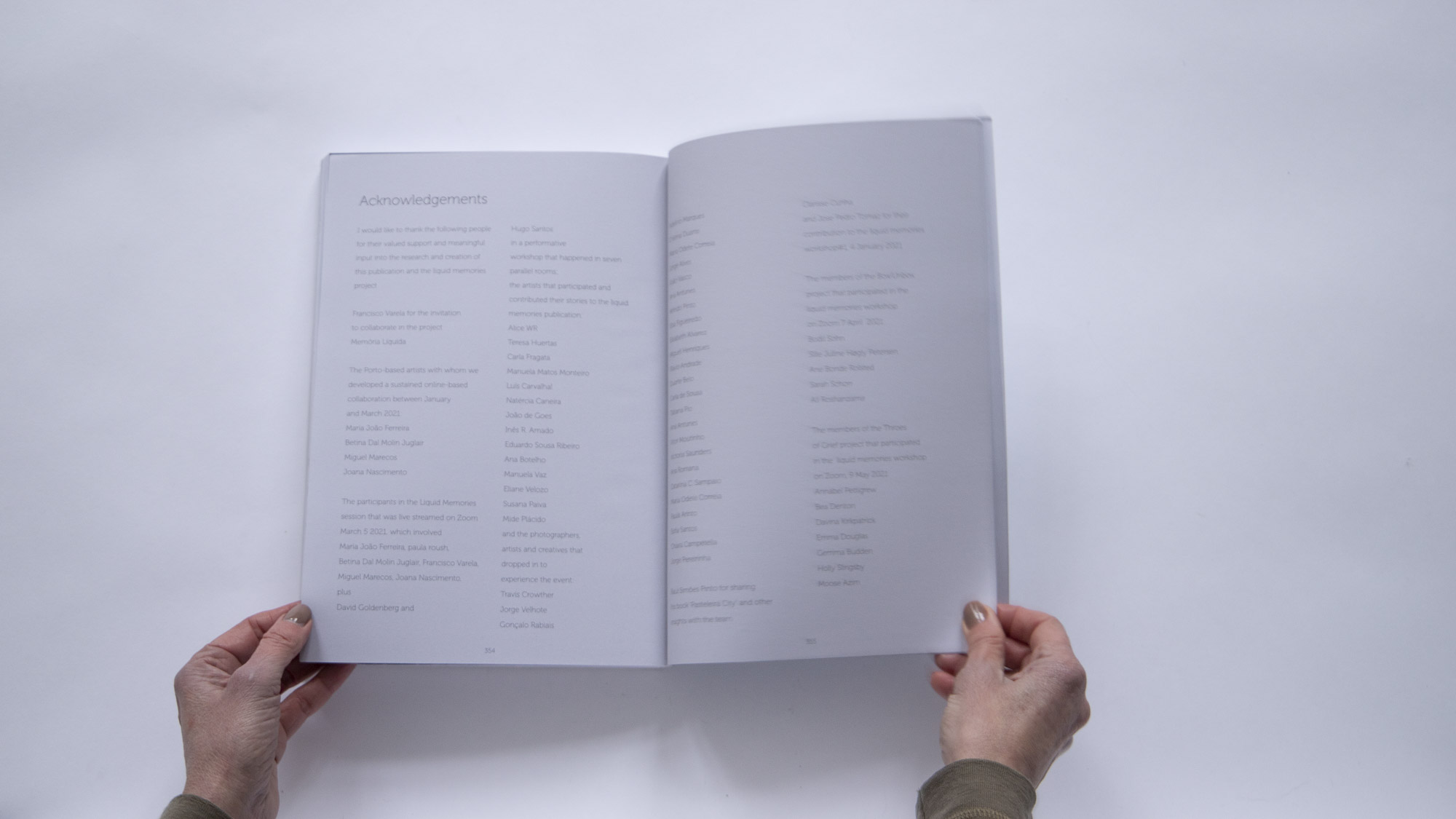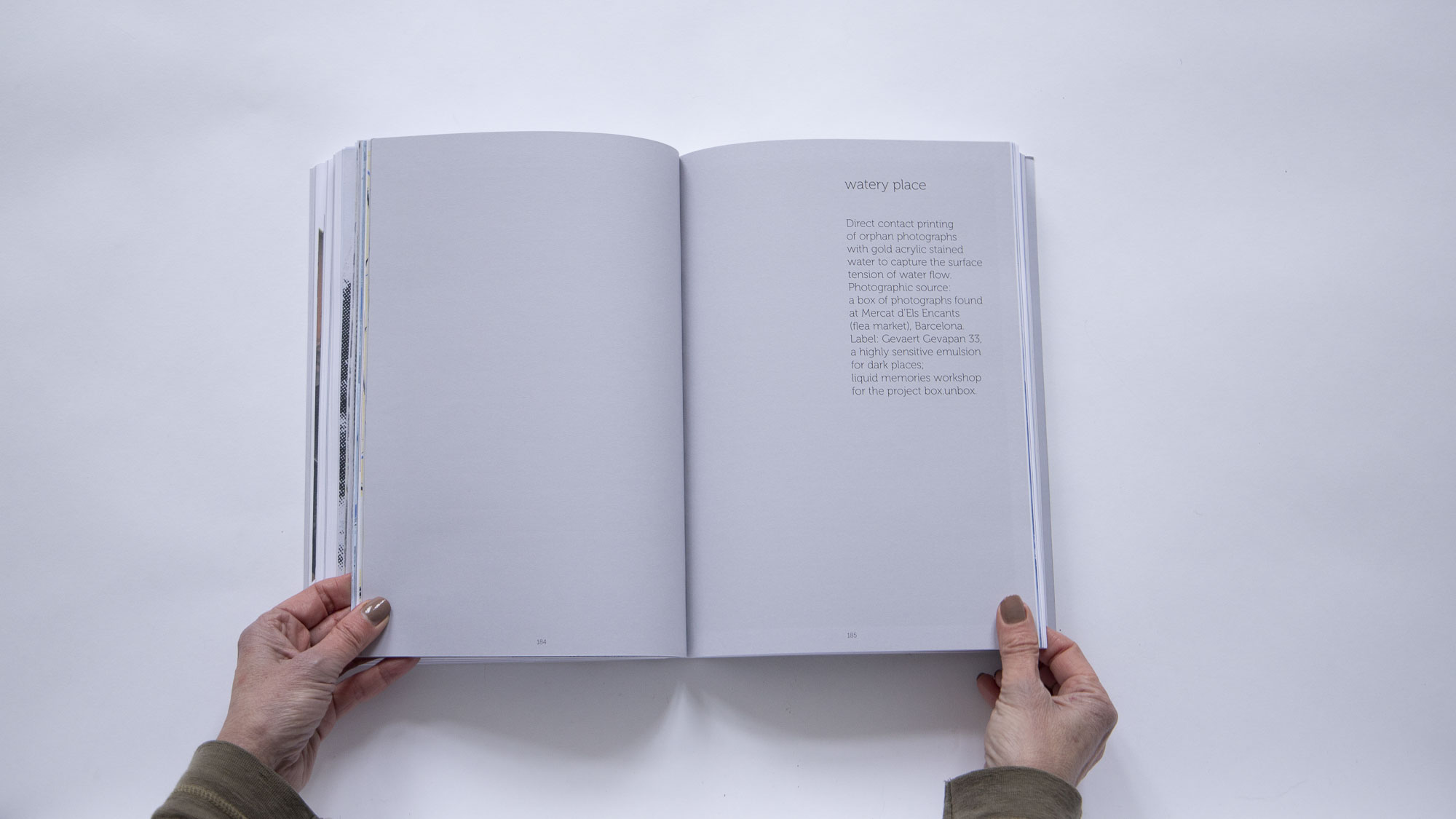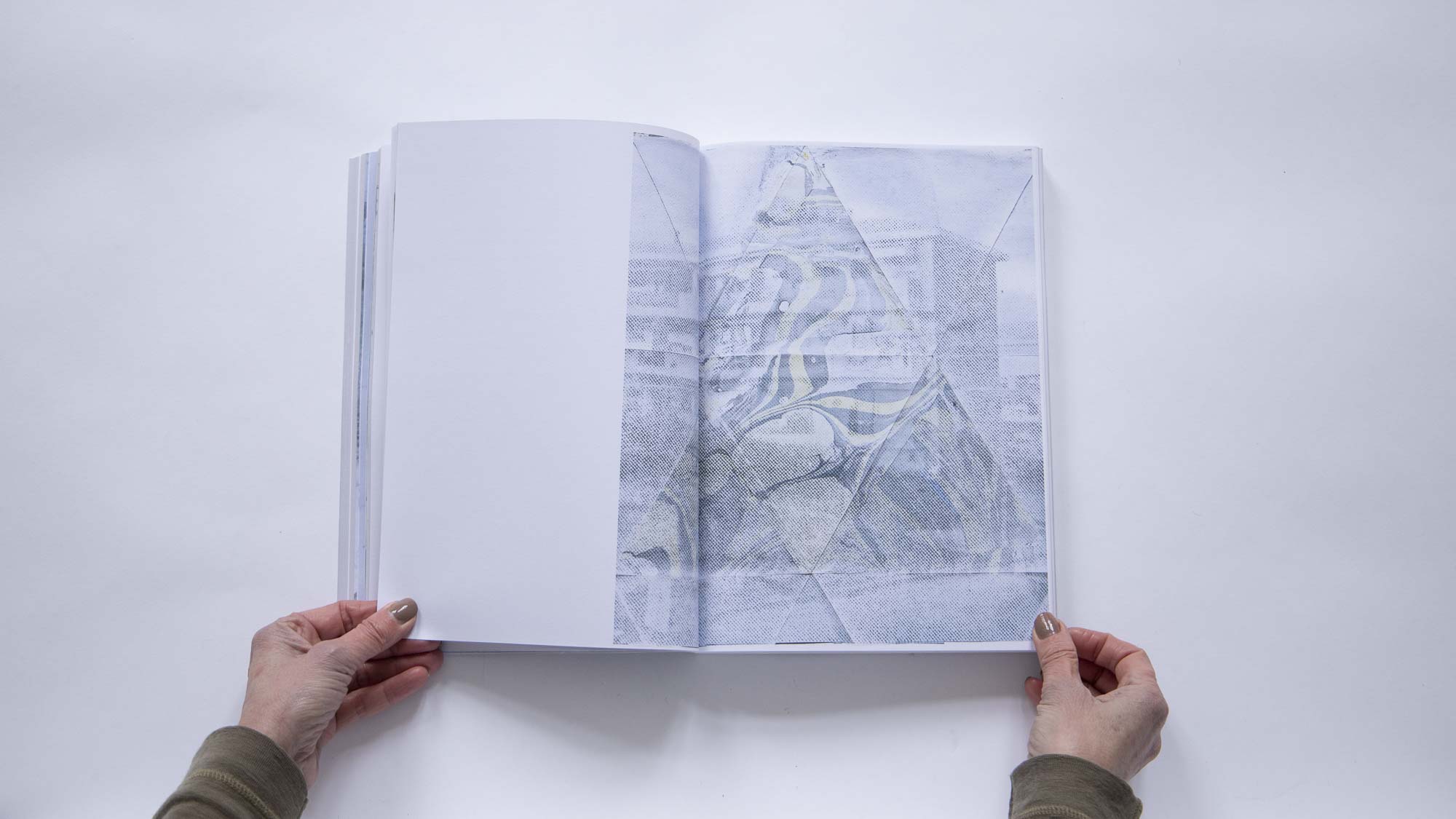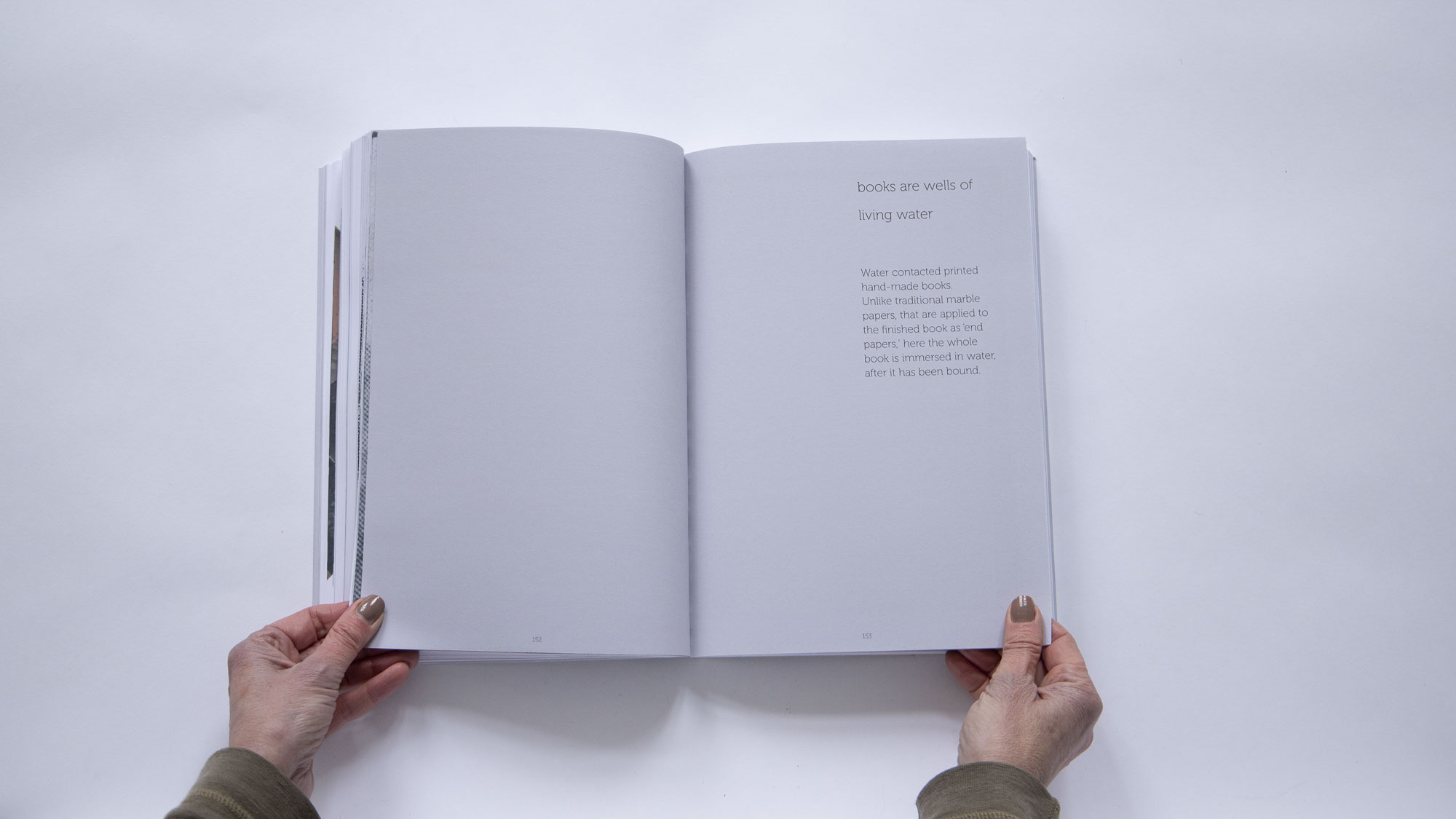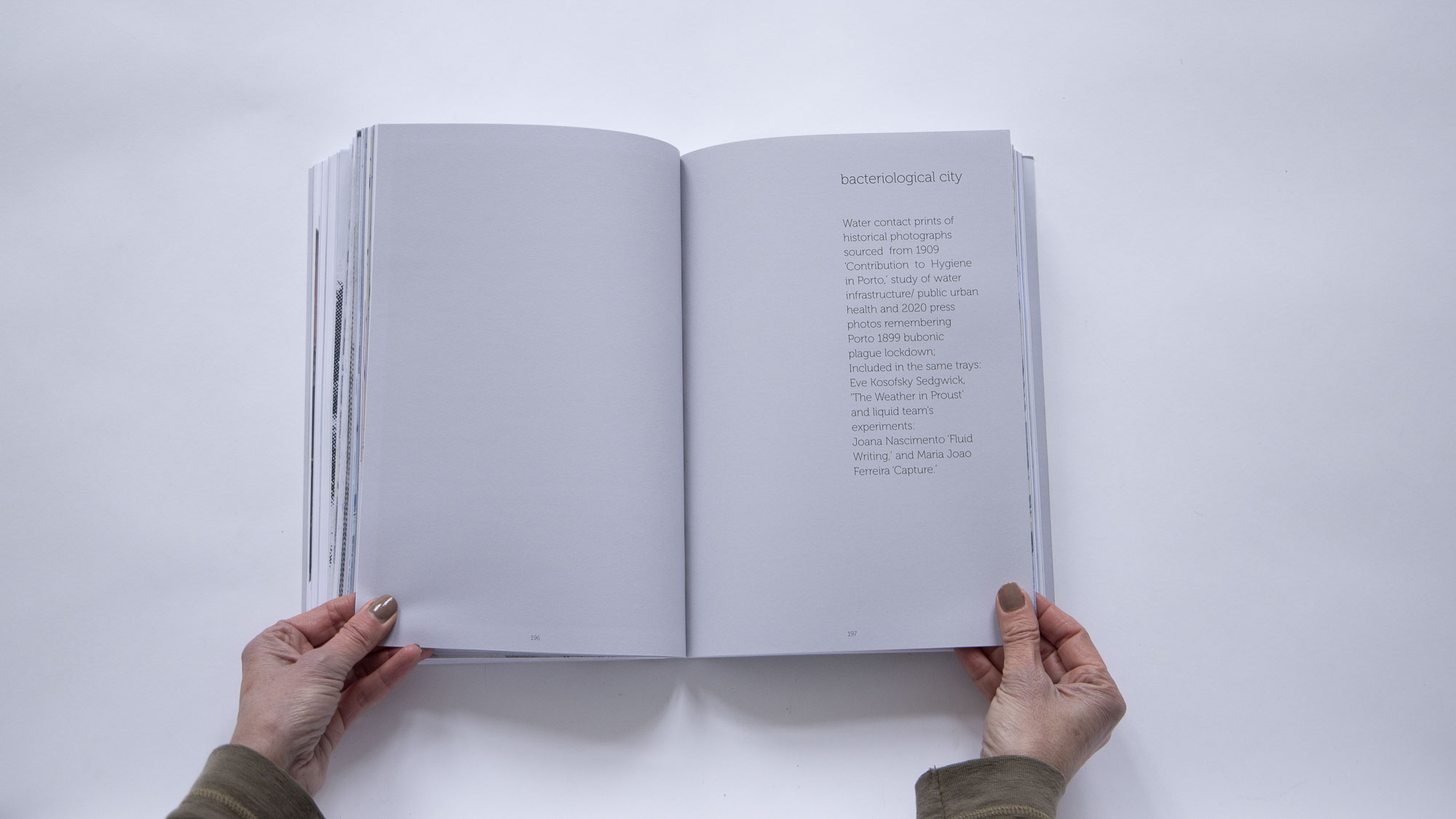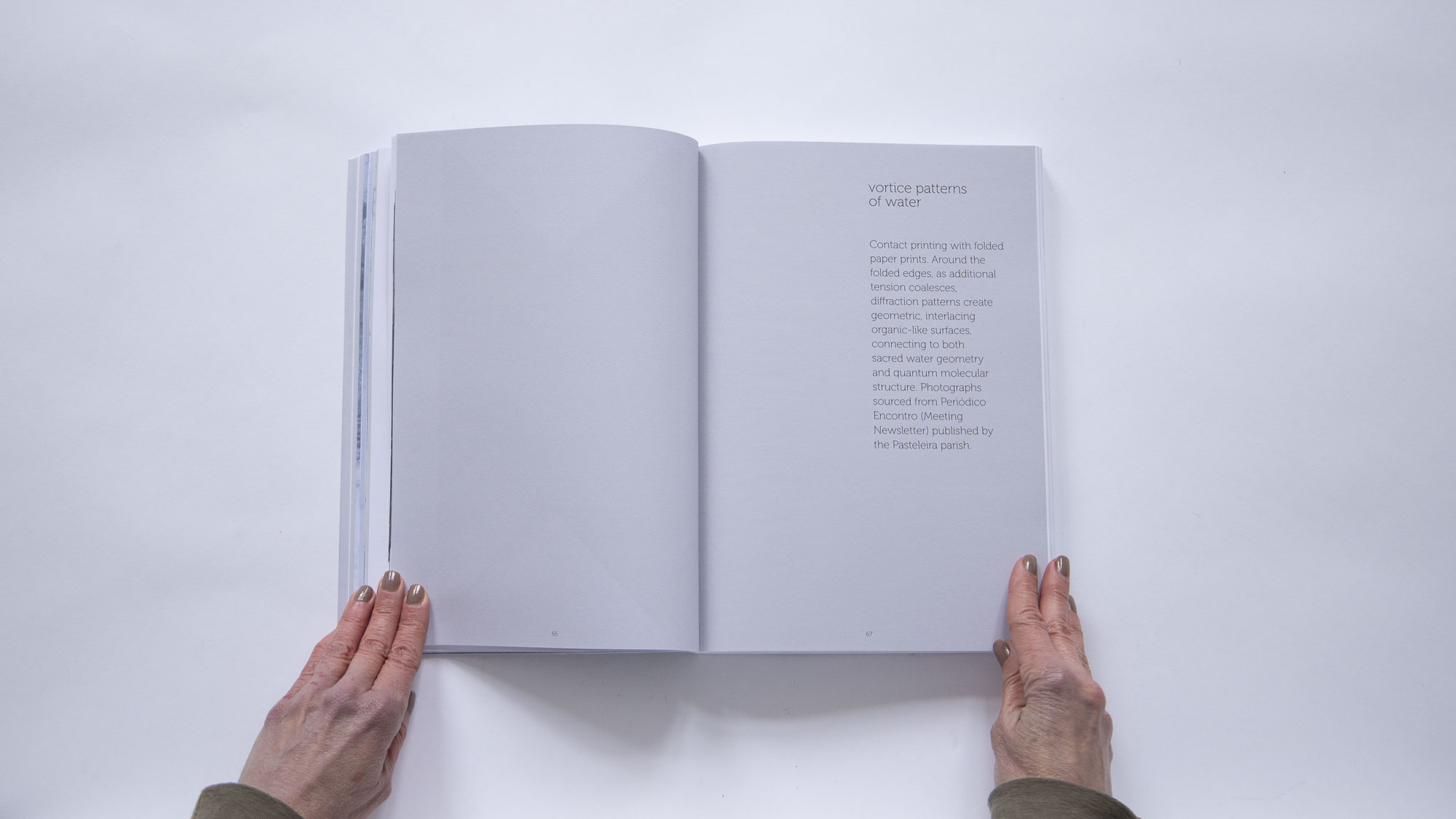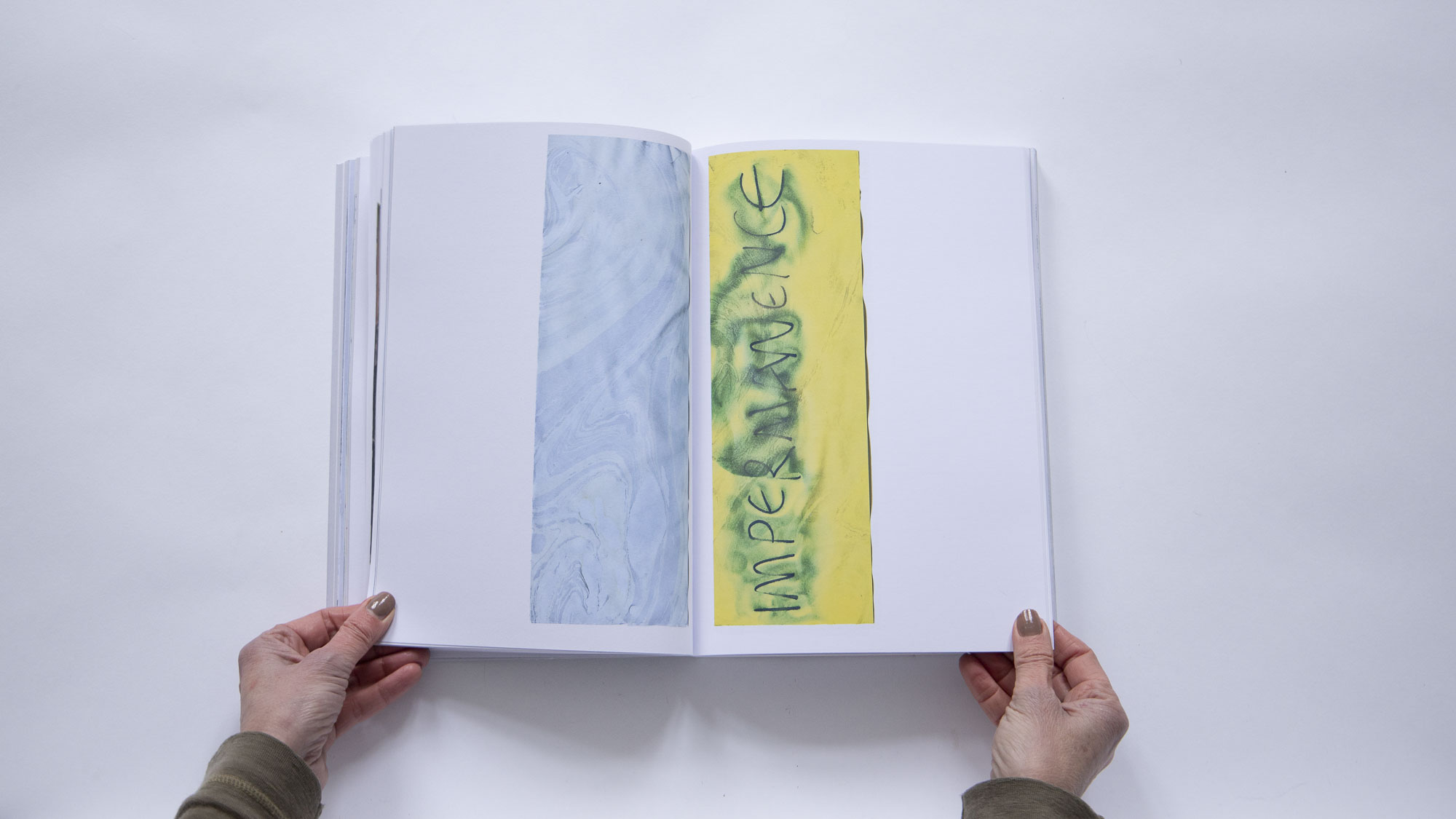WATER PRINTS
PROJECT and EDITORIAL DESIGN: paula roush
PAGES: 360
TEXT: English
CONTENTS: 14 sections
PRINTING: HP Indigo 12000 digital
PAPER: Recycled uncoated, 135gsm (book block),
and 350 gsm (cover)
BINDING: Paperback, perfect bound
SIZE : 29.7 x 21 X 2.5 cm
ISBN: 9781739099602
RELEASE DATE: November 2022
PUBLISHED BY: msdm publications
£35 ADD TO CART
WATER PRINTS is an archive of experiments testing the interaction of prints with water and varied painting and paper folding techniques. The term 'water prints' is mobilised to designate a way of altering the photographic surface via concrete intersections of the materialities of photoprints and tainted water. The selection of water prints guides us into the realms of water and its archival time, exploring the liquid entanglements of water, place, photography and memory.
Submitting historical photographs and documents collected around the zone of Pasteleira Reservoir (around the Douro river, Portugal) to multiple watery treatments, shows us, on the one hand, the way water is mobilised towards historical constructs that define territorial power; On the other hand, water’s material mobility equals the nonlinear flow of time, suggesting why our memories may appear to us in the shape of watery places and phenomena.
Water Prints é um arquivo líquido em forma de fotolivro, reunindo 360 páginas de experimentação entre fotografia, água e técnicas de pintura e dobragem. Surgido como desdobramento íntimo do laboratório colectivo liquid memories, este livro desloca o foco para um processo mais pessoal: submeter fotografias de arquivo e documentos recolhidos na zona da Barragem da Pasteleira (junto ao Douro) a banhos, infiltrações, dissoluções e reconfigurações hídridas.
As imagens — ensopadas, manchadas, esbatidas, reativadas — revelam duas dimensões da água: meio de inscrição de poder territorial e, simultaneamente, força de mobilidade temporal. A água age como editora e autora, dobrando o tempo da memória num fluxo não-linear que devolve histórias sob a forma de fenómenos aquosos: manchas que são cronologias, sedimentos que são testemunhos, dobras que são geografias íntimas.
Ao longo de 14 secções, Water Prints propõe uma ecologia editorial onde fotografia, lugar e água se entrelaçam; um atlas sensorial de superfícies transformadas, onde cada print funciona como vestígio de interacções entre corpos (de água, de papel, de terra) e camadas históricas.
Este livro emerge de uma geografia específica — o Douro e a Pasteleira — e trabalha directamente com águas locais, arquivos territoriais e materialidades afectadas por infraestruturas hídricas. As impressões contam histórias situadas: a água do lugar age sobre as imagens como memória viva, transportando temporalidades, disputas territoriais e afectos sedimentados no ecossistema ribeirinho.









